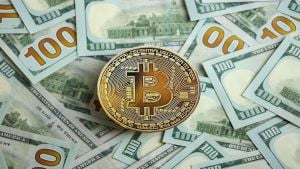Financial markets across the globe are currently displaying substantial fluctuations, requiring close attention from investors and analysts alike. The financial updates provided on February 24 and 25, 2025, reveal significant movements across currency exchange rates, stock indices, and cryptocurrency values, reflecting the dynamic nature of the current economic environment.
On February 24, the Brazilian real showed notable exchange rates against several major currencies. The US dollar was trading at R$ 5.7295 for purchase and R$ 5.7307 for sale, marking a marginal positive growth of 0.012%. Meanwhile, the euro exhibited similar behavior, priced at R$ 5.9919 for purchase, which also indicated a positive fluctuation of 0.015%. The British Pound, being one of the standout performers, recorded rates of R$ 7.2395 with positive variation of 0.075%. On the contrary, the Japanese yen experienced depreciation, valued at R$ 0.0382, reflecting a decrease of 0.261%.
Looking at the stock market, the IBOVESPA, which is the primary index of the São Paulo stock exchange, closed at 127,128.06 points, down slightly by 0.37%. The US market indices were not far behind on the decline, with the NASDAQ closing at 19,524.01 points and experiencing a decrease of 2.2%. The Dow Jones registered 43,428.02 points, reflecting a drop of 1.69%. Conversely, the Asian market showed more resilience; the Nikkei 225 recorded growth, reaching 38,776.94 points, with its own increase of 0.26%.
Turning to the cryptocurrency market, volatility was apparent on multiple platforms. The price of Bitcoin, the leading cryptocurrency, was reported at R$ 581,519.064 for both purchase and sale on Brazilian exchanges, with noticeable upward movement of 0.606%. The international platforms also reflect varied pricing, with Bitcoin quoted around USD 95,750.57 on Blockchain.info. These fluctuations reiterate Bitcoin's continuing allure to investors, signaling its integral role within today's financial markets.
Interest rates remained stable during this period, with both the CDI and the Selic rate holding firm at 13.25%. The daily CDI rate was recorded at 13.15%. This consistency speaks volumes about Brazil's monetary policy aimed at fostering economic stability during uncertain times. Investors and businesses are closely monitoring these factors, as they are pivotal for maximizing returns amid the currently competitive financial climate.
On February 25, the trends across the exchange markets continued to indicate variability. The dollar underwent slight changes with rates showing R$ 5.7785 for buying and R$ 5.7770 for selling, which hinted at negative variation of 0.061%. The euro experienced declines as well, with trading rates at R$ 6.0484 to purchase and R$ 6.0496 for sales, down by 0.031%. Meanwhile, the British pound showed signs of strength, bought at R$ 7.2959.
The performance of the Brazilian stock market remained negative with the IBOVESPA dropping to 125,401.38 points, reflecting a downturn of 1.36% since the previous close. Although the Dow Jones showed slight recovery by closing at 43,461.21 points, the NASDAQ still faced declines, closing at 19,286.93 and marking 1.21% lower. Notably, the CAC 40 index from France reported mixed results, signaling the challenges faced by various sectors as they react to global uncertainties.
Bitcoin took another hit, now valued at 541,460.601 reais due to significant selling pressure, reflecting decline rates running around 6.01%. Similarly, on platforms like BitStamp, Bitcoin was quoted at approximately 88,346 US dollars. Among local exchanges, Bitcoin's price dropped to 514,113 reais on FoxBit, affirming the volatility present within the cryptocurrency spectrum.
With these fluctuations highlighting both challenges and opportunities for investors, it's clear we stand at the cusp of notable economic shifts. The steadfast interest rates, matched with observed variations within the market stocks and currencies, are all part of the same narrative—one where investors must remain vigilant and adaptable to thrive, especially as the dawn of new financial realities approaches.



